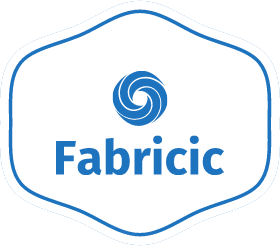Rubber cement and white glue are both types of adhesives used for sticking things together, but they have some important differences. Rubber cement is a liquid adhesive containing rubber dissolved in a solvent, while white glue is made from water and a polymer called polyvinyl acetate.
Rubber cement dries quickly and is good for temporary bonds, like in crafts. White glue takes longer to dry but forms stronger and more permanent bonds, useful for woodworking and general repairs. Knowing the dissimilarities between these adhesives can help you choose the right one for your projects.
What is rubber cement?
Rubber cement is a type of liquid adhesive used for sticking things together. It contains rubber mixed with a solvent, which keeps it in a liquid state.
When applied to surfaces, the solvent quickly evaporates, leaving the rubber to bond to the materials. Rubber cement dries fast and is commonly used in crafts and artwork.
It forms temporary bonds and allows for the repositioning of materials. The adhesive is often transparent when dry, making it ideal for projects where visibility is important.
Read More:
What does rubber cement do on glass?
How Can I Use Rubber Cement On Plastic?
Best Rubber Cement Brushes
What is rubber cement used for?
Rubber cement is a versatile adhesive with various applications. Its unique properties make it valuable for different purposes in crafts, artwork, and repairs. This article explores the common uses of rubber cement and highlights its benefits.
Uses of Rubber Cement:
- Crafts and Artwork:
- Ideal for collages, scrapbooking, and paper crafts.
- Allows for temporary bonding and easy repositioning of materials.
- Provides a transparent and neat finish, especially on delicate projects like photos.
- Repairs:
- Suitable for fixing torn papers and book bindings.
- Handy for small household repairs, like reattaching loose items.
- Mounting:
- Used in photography to mount photos on boards without damaging them.
- Preferred in graphic design for paste-up layouts.
- Packaging:
- Rubber cement finds its place in packaging for securing boxes and cartons.
Rubber cement’s fast-drying, temporary bonding, and transparent qualities make it a popular adhesive for crafts, artwork, and minor repairs. Its versatility and ease of use make it a valuable tool for various creative and practical applications.
What is white glue?
White glue, also known as school glue or PVA glue, is a type of adhesive. It is made from water and a polymer called polyvinyl acetate.
White glue is widely used for sticking things together, like paper, cardboard, and crafts. It dries to form a strong and durable bond. It’s popular for school projects, woodworking, and general repairs around the house.
When the glue is dry, it becomes transparent and can be painted over or decorated without leaving any marks.
What is white glue used for?
White glue, also known as school glue or PVA glue, is a popular adhesive with various practical applications. This article explores the common uses of white glue and its benefits in different projects and tasks.
Uses of White Glue:
- Crafts and School Projects:
- Perfect for sticking paper, cardboard, and fabric in arts and crafts activities.
- Ideal for creating collages and DIY projects.
- Frequently used by students for school assignments.
- Woodworking and Repairs:
- Valuable in woodworking for bonding wood pieces together.
- Useful in general household repairs, and fixing broken items.
- Bookbinding and Paperwork:
- Commonly employed in bookbinding to hold pages together.
- Useful for mending torn papers and documents.
White glue’s versatility, ease of use, and strong bond make it an essential adhesive for a wide range of applications. Whether it’s for crafts, repairs, or paperwork, white glue proves to be a reliable and convenient tool for getting the job done.
Rubber Cement Vs. White Glue
| Aspect | Rubber Cement | White Glue |
|---|---|---|
| Composition | Contains rubber and solvent | Made from water and polyvinyl acetate polymer |
| Drying Time | Quick drying due to solvent | Slower drying, requires water evaporation |
| Bond Strength | Temporary bonds, weaker | Stronger and more permanent bonds |
| Applications | Crafts, collages, temporary bonds | Woodworking, school projects, general repairs |
| Transparency | Dries clear | Dries opaque (white finish) |
| Repositioning | Allows for repositioning | Bonds are relatively fixed |
Is rubber cement a strong glue?
Rubber cement is not considered a strong glue. It forms temporary bonds that are weaker compared to other adhesives like white glue. Rubber cement is designed for applications where you may need to reposition materials or create temporary bonds.
It dries quickly due to solvent evaporation, but the bond it forms is not as durable or permanent as other stronger glues. If you need a stronger and more long-lasting bond, it’s better to use adhesives like epoxy or super glue instead of rubber cement.
Conclusion
In conclusion, rubber cement and white glue are two distinct types of adhesives with different properties and uses. Rubber cement contains rubber and a solvent, drying quickly to form temporary bonds. It’s great for crafts and artwork where repositioning is needed.
On the other hand, white glue is made from water and a polymer, forming stronger and more permanent bonds, making it suitable for woodworking and general repairs. White glue’s opaque finish contrasts with rubber cement’s transparent quality.
Understanding their differences helps in choosing the right adhesive for specific projects, whether it’s for temporary or long-lasting bonding requirements.
